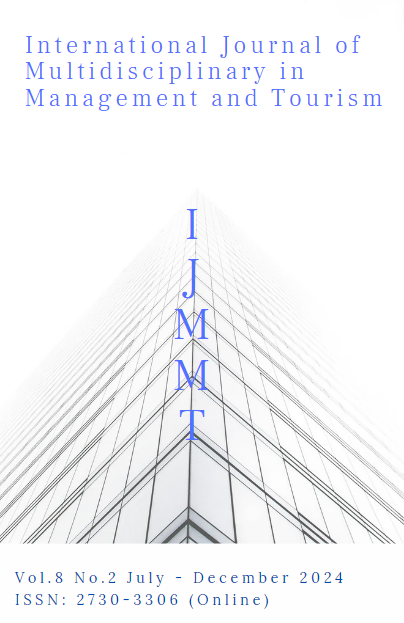The Spirit of “Art Deco Movement” in Fuzhou Area of China is Integrated into Lacquer Accessories
Main Article Content
Abstract
Lacquer art in the process of production also injected the author's thoughts and emotions, giving personality spiritual connotation, so that it is rich in artistic beauty. In Chinese history, "lacquer" has already gone beyond the category of "thing" and become a part of spirit. In classical aesthetics, "lacquer" is reflected in the effect of people on "lacquer", which expresses individual learning and mood. In terms of modern aesthetics, lacquer art is related to contemporary cultural context, Chinese survival experience and individual spiritual wisdom. The application of lacquer art by Western artists in "Art Deco" pays attention to the luxurious decorative effect, but also pays attention to the expression techniques of modernism, especially the use of modern materials in classical forms. Whether it is in the color combination, pattern pattern, modeling combination, or in the design concept and the integration of multi-culture art, it has brought new application design methods and design ideas to the modern Chinese lacquer art. This Article aimed to study (1) the cultural overview of Chinese lacquer art and the "spiritual beauty" in lacquer art; (2) The performance theme and pattern decoration characteristics of the lacquer ware in Fuzhou area; (3) The aesthetic characteristics of the decorative art movement, and summarize the color types and characteristics, modeling characteristics, pattern types and characteristics of decorative art; On the basis of the above research, the decorative characteristics of Fuzhou area paint art combined with the patterns, shapes and colors of different artistic styles of "Art Deco movement" are applied to the design of current Chinese accessories, which can not only inherit this traditional arts and crafts, but also find a design method that can integrate Chinese national characteristics for the current Chinese accessories.
Article Details

This work is licensed under a Creative Commons Attribution-NonCommercial-NoDerivatives 4.0 International License.
References
Li, Y. (2007). Fuzhou lacquer art from a cultural perspective: a review of Wang Tianliang's "Fuzhou Lacquer Art". Journal of Fujian Normal University (Philosophy and Social Sciences Edition), (2), 43-46. https://doi.org/10.3969/j.issn.1000-5285.2007.02.006
Liu, H. (2011). Big ware heavy in China. Chinese Handicraft, (11). Retrieved from https://www.cnki.com.cn/Article/CJFDTotal-TCZG201111032.htm
Lv, H. (2015). The path to contemporary lacquer art innovation. Journal of Chinese Lacquer, (1), 30-35. https://doi.org/cnki:sun:sqzg.0.2015-01-007
Min, W. (2016). Shen Shaoan family and Fuzhou Born Lacquer. Mindu Culture, (2), 44-47. Retrieved from https://www.xueshu.com/mdwh/201602/
Xu, Z., & Liu, H. X.Y (2022). A comparative study of decorative arts from the perspective of formalism: A case study of Mu Xia and Hang Xi Ying's Works. Pop Color. (4),143-145. Retrieved from https://xueshu.baidu.com/usercenter/paper/show?paperid=1u5d04 n0mb2602607u3r0a807w474078&site=xueshu_se
Zhang, J., Liu, F., & Zhang, L. (Eds.). (2013). The Theory of Fine Arts and Art Design. China Book Publishing House.

